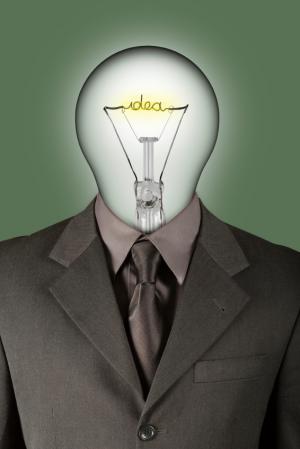지 난번에 이중국어사용자가 주어진 문제를 여러 측면에서 생각할 수 있다는 논문을 번역했던 기억이 난다. 그런데, Art markman교수가 Psychology today에 소개한 새 논문이 창의성의 '문화적'영향을 밝혀냈기에 이번 글에 소개하고자 한다.
해외파 축구선수들이 국내파 선수보다 창의적인 플레이를 보이는 이유가 바로 여기 있을까? 알 수 없는 일이다. 박지성이나 박주영이 창의적 플레이를 익힌 이유는 빅리그 경험도 있겠지만, 다양한 문화의 선수들을 접했기 때문인지도 모른다(?).
출처: Psychology today(Art Markman)
번역: 인지심리학 매니아
요즘 '다문화'라는 말은 긍정적, 부정적 의미를 모두 내포하고 있다. 세계는 점점 작아지고 있다. 우리는 인터넷은 통해 전세계의 사람들과 소통이 가능하고, 비행기를 통해 어디라도 갈 수 있다. 이런 시대에서는 다른 문화에서 온 사람들을 이해하는 것이 필수적이다.
전세계 어디로든 이동이 가능함에 따라 이민자의 수 역시 증가했다. 한 국가 내 주류 문화의 구성원들은 다른 나라에서 온 사람들과 촉각을 곤두세우기도 한다. 그런데, 이렇게 여러 문화를 체험하는 것이 심리학적으로 어떤 이득이 있을까?
외국에 나가 살면 왜 창의적인 사람이 될까?
William Maddux, Hajo Adam, Adam Galinsk가 2010년에 Personality와 Social Psychology Bulletin에 실은 논문이 이 문제에 대해 연구했다. 이들은 특히 외국에 나가 살면서 그 곳의 문화를 체험한 사람이 다른 사람보다 창의적인지 관심이 있었다.
우 리는 외국에 가서 우리와 다른 문화를 접한다. 예를 들어 미국에서는 누군가의 집에 갔을 때 호스트가 음료수나 스낵을 제공하면 자신의 선호에 따라 '예', '아니오'로 답하게 된다. 그러나 러시아에서는 처음부터 '예'라고 하는 것이 무례한 행동으로 여기며, 따라서 처음 제안에서 '아니오'라고 대답해야 한다. 이 경우 호스트가 다시 한번 권유를 하게 되고, 몇번의 실갱이 끝에 '예'라고 답하는 것이 관례라고 한다. 만약 러시아인이 미국을 방문해서 음식을 권유하는 집주인에게 '아니오'라고 대답했다면, 게스트는 집 주인이 다시 권유를 하지 않는 것에 굉장히 놀랄 것이다. 이를 통해 러시아인은 자신의 문화와 전혀 다른 관습을 배우게 되는 것이다.

동일한 과제(음식 제공받기)에서 다른 해결책을 도출하는 것이 창의성의 핵심이다. 따라서 다른 문화에서 다른 관습을 접한 사람은 다른 사람보다 훨씬 창의적일 수도 있다는 것이다.
이
가능성을 알아보기 위해 연구자들은 일련의 실험을 진행했다. 첫번째 실험에서는 외국에 나가 살았던 경험이 있는 학생을 모집했다.
실험 시작 전에 참가자 중 몇몇에게는 해외에 나가서 경험했던 새로운 문화와 그들이 그렇게 행동하는 이유에 대해 회상하게 했다.
다른 참가자들에게는 자신이 속한 나라의 문화 중 하나에 대해서 생각하고 사람들이 왜 그렇게 행동하는지 생각하게 됐다. 세번째
집단의 경우 스포츠에 대해 배운 새로운 것 하나를 생각하게 했다. 마지막 그룹은 아무 생각도 하지 않았다.
그 다음 모든 참가자들은 Remote Associates Test를
수행했다. 이 과제는 단어 3 개를 준 다음 이와 관련된 단어를 연상하게 한다. 예를 들어 Putting Back Horn
이라는 세 단어를 본다고 가정하자. 이 경우 정답은 Green이다. 이 과제를 성공적으로 수행하기 위해선 단어들에 대해 다르게
생각하는 것이 필요하다.
새로운 문화를 접했던 참가자들의 경우 이 과제에서 더 많은 단어를 도출해냈다. 사람들에게 단지 새로운 문화를 접했던 기억을 상기시키는 것 만으로도 창의성이 증진된다는 것이다.
또
다른 실험에서 연구자들은 외국에 나간 경험이 없는 사람들에게 새로운 문화에 대해 생각해보라고 했다. 그러나 효과는 없었다.
연구자들은 다른 실험을 통해 새로운 문화 체험은 사람들이 왜 그렇게 행동하는 지를 이해할 때 효과가 있음을 알아냈다.
'인지심리기사 > 창의' 카테고리의 다른 글
| 창의성 101 - 창의성에 관한 심리학 연구 개관 (0) | 2011.08.03 |
|---|---|
| 사고 및 창의성 강의자료(이정모 교수님) (0) | 2011.08.03 |
| 눈 깜빡임과 창의성의 관계 (0) | 2011.08.03 |
| 통찰(insight)의 신경학적 근거 (0) | 2011.08.03 |
| 안구운동이 창의력을 증진시킨다 (0) | 2011.08.03 |

